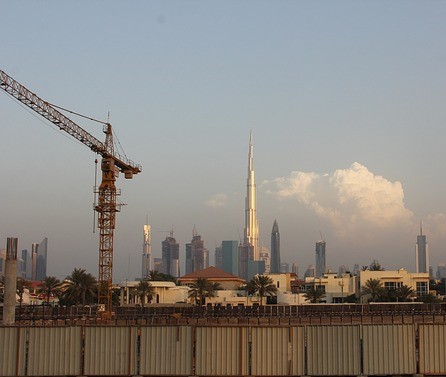Despite their significant to national economies, there is currently no common definition of a SME
- Employee count, sales, and assets have been used internationally to develop precise definitions of what constitutes a SME
- Based on the EU definition, 92% of firms in the Arab World would be considered small or medium in size
While employee count, sales, and assets have been used internationally to develop precise definitions of what constitutes a SME, lack of financial data on establishments operating in the Arab countries has resulted in many countries relying primarily on number of employees. In several countries, there is presently no definition of what defines a SME.
The data we collected suggests that most firms in the region are under 200 employees.
If the EU’s definition of what constitutes a small and medium-sized enterprise is applied (micro firms <10 employees, small firms 10-49 employees, and medium-sized firms 50 – 250 employees), 92% of firms in the Arab World would be considered as small and medium-sized enterprises with 25% classified as micro businesses, 44% as small businesses, and 23% as medium-sized businesses.
We built partnerships with financial institutions to support early-stage SMEs.
Learn more about our Public Sector Strategy and Execution services.
The data presented below are proxied from World Bank firm-level surveys which draw on a representative sample of an economy’s private sector to shed light on a broad range of business environment topics. Enterprise Surveys are answered by business owners and top managers with input from finance and HR staff. The sampling frame for each country is stratified by business activity, firm size, and location and is confined to formal establishments excluding fully government owned firms. The primary focus sectors include manufacturing and service establishments corresponding to ISIC Revision 3.1 codes 15-37, 45, 50-52, 55, 60-64, and 72.
We analyzed data for 6,257 firms in Algeria, Egypt, Iraq, Jordan, Lebanon, Mauritania, Morocco, Oman, Palestine, Saudi Arabia, Syria, and Yemen.
While the survey coding frames are very similar across countries, some countries made minor localization changes (such as aggregation of or more specificity for certain industries) as well as added additional questions to the standardized questionnaire in some cases, most notably some countries chose to also survey firm with less than 5 employees while others did not. This distribution reflects the high number of small and medium sized businesses that employ a significant percentage of the workforce in the Arab World.
Across these countries, we found 72% of firms were from the manufacturing sector, 22% from the services sector, and the remaining 7% from the construction and transport sectors.
Within the manufacturing sector, food and beverage, textiles and garments, and other manufacturing (primarily ISIC Rev. 31. codes 20-23, 30, 33-37) were the largest industries surveyed. Within the services sector, other services (primarily ISIC Rev. 3.1 code 50 and other unspecified services), hotels and restaurants, and retail were the largest industries surveyed.
| Company Size | Algeria | Egypt* | Iraq | Jordan | Lebanon | Mauritania |
|---|---|---|---|---|---|---|
| 1-4 | 2% | NA | 9% | .4% | 36% | 36% |
| 5-9 | 28% | 5% | 40% | 15% | 21% | 40% |
| 10-24 | 33% | 34% | 41% | 26% | 24% | 18% |
| 25-49 | 20% | 10% | 7% | 20% | 12% | 4% |
| 50-99 | 9% | 8% | 2% | 14% | 4% | 2% |
| 100-199 | 5% | 16% | 1% | 11% | 2% | 0% |
| 200-249 | 2% | 4% | 0% | 2.4% | 0% | 0% |
| 250-499 | 1% | 9% | 0% | 5.8% | 1% | 0% |
| 500-999 | 0% | 6% | 0% | 4.0% | 0% | 0% |
| 1,000+ | 0% | 8% | 0% | 2.0% | 0% | 0% |
| Company Size | Morocco | Oman | Palestine | Saudi Arabia | Syria | Yemen |
|---|---|---|---|---|---|---|
| 1-4 | NA | 2% | .5% | NA | 3% | NA |
| 5-9 | 0% | 21% | 36.2% | 0% | 14% | 45% |
| 10-24 | 25% | 29% | 35.2% | 8% | 26% | 23% |
| 25-49 | 24% | 25% | 13.7% | 27% | 17% | 12% |
| 50-99 | 12% | 19% | 9.2% | 28% | 16% | 9% |
| 100-199 | 19% | 3% | 3.0% | 19% | 12% | 4% |
| 200-249 | 5% | 0% | .7% | 6% | 3% | 2% |
| 250-499 | 11% | 0% | 1% | 8% | 7% | 2% |
| 500-999 | 2% | 0% | .2% | 2% | 2% | 2% |
| 1,000+ | 2% | 0% | .2% | 1% | 1% | 1% |





































